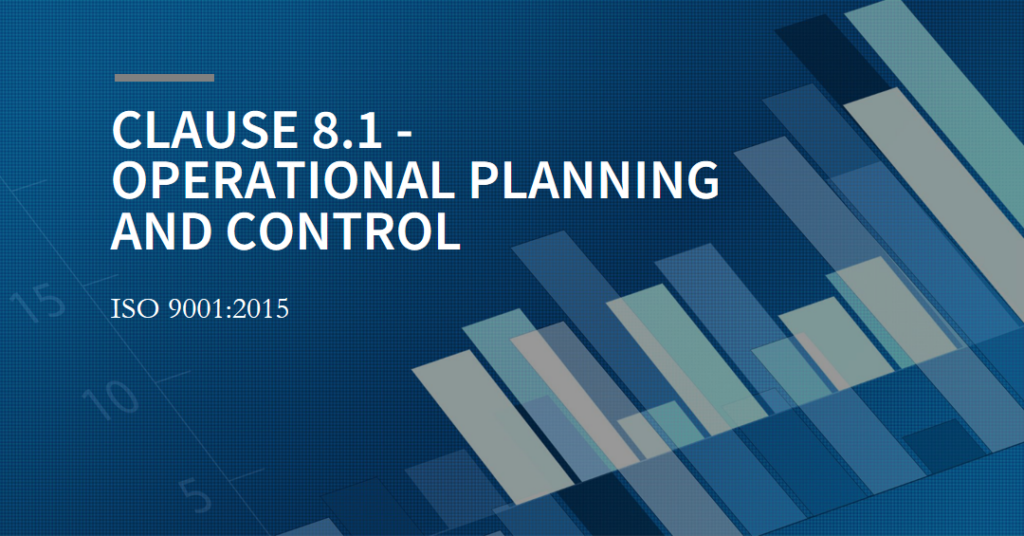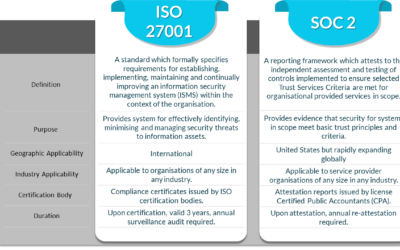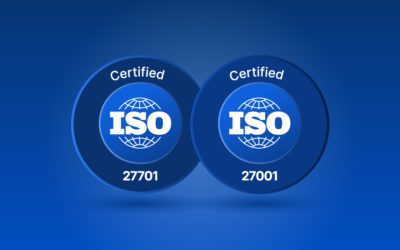Clause 8 ISO 27001 is an international standard for the establishment, implementation, operation, monitoring, review, maintenance, and improvement of an Information Security Management System (ISMS). It provides organizations with a systematic approach to managing sensitive company information, ensuring it remains secure. The standard is globally recognized and widely adopted across various sectors, including finance, healthcare, and technology, to help organizations safeguard their data, comply with legal and regulatory requirements, and build trust with stakeholders.
ISO 27001 consists of several key clauses, each with its own specific requirements and objectives. One of the most important of these is Clause 8, titled “Operation.” Clause 8 outlines the critical elements that an organization must address to ensure the successful operation of their ISMS. It deals with the planning and implementation of processes, controls, and actions required to manage and mitigate information security risks within the scope of the ISMS.
In this article, we will explore Clause 8 of ISO 27001 in detail. We will provide an in-depth understanding of its purpose, its specific requirements, and how organizations can meet its standards to ensure the ongoing success and effectiveness of their ISMS.
What is Clause 8 of ISO 27001?
Clause 8 of ISO 27001 is centered around the “operation” of the Information Security Management System. It is one of the most practical and action-oriented sections of the standard, providing organizations with guidelines for how to effectively manage and execute their information security processes and controls. The operations of an ISMS should be based on risk assessments and should prioritize continual improvement and mitigation of potential information security risks.
Key Aspects of Clause 8
Clause 8 is concerned with the following core elements:
- Operational Planning and Control: Ensuring that security controls are designed, implemented, and maintained effectively to manage identified risks.
- Managing Information Security Risks: Identifying, assessing, and addressing information security risks in a proactive and ongoing manner.
- Monitoring and Reviewing Controls: Ensuring that security controls are actively monitored, measured, and reviewed to evaluate their performance and effectiveness.
- Corrective and Preventive Actions: Identifying and addressing any nonconformities in the ISMS and taking corrective or preventive actions to improve information security.
- Documenting Actions and Decisions: Properly documenting processes, actions, and decisions taken within the ISMS to ensure accountability and traceability.
These elements together provide the framework for ensuring the effective operation of the ISMS and aligning it with the organization’s goals, security objectives, and regulatory requirements.
Requirements of Clause 8 of ISO 27001
Clause 8 contains specific requirements that organizations must meet to ensure that their ISMS is operating efficiently and effectively. These requirements include operational planning, risk management, monitoring, corrective actions, and continual improvement. Let’s explore each requirement in more detail.
1. Operational Planning and Control

Effective operation of an ISMS requires careful planning, which starts by identifying the information security risks the organization faces and selecting the appropriate security controls to mitigate these risks. Clause 8 mandates that organizations define clear objectives, allocate resources, and ensure that security activities are consistently aligned with these objectives.
Key Actions Under Operational Planning:
- Define Roles and Responsibilities: The organization must assign clear roles and responsibilities for information security activities to staff at all levels. This ensures accountability and clarity in operations.
- Implement Security Controls: Security controls must be planned and implemented based on the results of the risk assessment, ensuring that they are effective in addressing identified risks.
- Allocate Resources: Adequate resources, including personnel, tools, and technology, must be allocated to implement and maintain the security controls.
By ensuring a structured approach to planning and control, Clause 8 helps organizations address security risks efficiently and prioritize their resources where they are needed most.
2. Managing Information Security Risks
Risk management is at the heart of ISO 27001, and Clause 8 emphasizes the need for organizations to manage and mitigate risks continuously. An essential part of the ISMS is the identification, assessment, and evaluation of risks to information assets, as well as implementing measures to mitigate those risks.
Key Actions for Managing Information Security Risks:
- Risk Assessment Process: Clause 8 requires that organizations conduct regular risk assessments to identify threats and vulnerabilities that could affect their information systems. This involves evaluating the likelihood and impact of potential risks and determining the level of security controls required to mitigate them.
- Risk Treatment Plans: After identifying the risks, the organization must develop and implement risk treatment plans. These plans define the specific actions and controls to be put in place to manage identified risks effectively.
- Risk Monitoring and Review: Organizations must ensure that risks are continuously monitored and evaluated. As new threats emerge or the business environment changes, the risk landscape may evolve, requiring a reassessment of existing controls and mitigation strategies.
By managing information security risks proactively, organizations can reduce their exposure to potential breaches, financial losses, and reputational damage.
3. Monitoring and Reviewing Controls
The effectiveness of an ISMS depends not only on how well it is designed and implemented but also on how well it is monitored and reviewed over time. Clause 8 highlights the importance of ongoing monitoring and review of the performance of information security controls.
Key Actions for Monitoring and Reviewing Controls:
- Key Performance Indicators (KPIs): Organizations must develop and use KPIs to monitor the effectiveness of their security controls. These KPIs can include metrics related to incident response times, the number of security incidents, or the percentage of employees completing information security training.
- Audit and Review: Regular internal audits and reviews are required to assess the ISMS’s overall performance and its ability to meet the organization’s information security objectives. These audits help identify any areas of noncompliance or weaknesses in the existing security controls.
- Management Reviews: The senior management team must conduct regular reviews of the ISMS to ensure it continues to meet business objectives and respond to emerging risks. This review should include evaluating audit findings, security incidents, and the results of the risk assessment.
Continuous monitoring and review of controls help organizations identify any weaknesses or inefficiencies in their ISMS and implement corrective actions as necessary.
4. Corrective and Preventive Actions
In the event that issues or nonconformities are identified within the ISMS, organizations are required to take corrective and preventive actions. These actions ensure that problems are addressed, preventing them from recurring and mitigating their impact on the organization’s security posture.
Key Actions for Corrective and Preventive Actions:

- Identifying Nonconformities: Clause 8 requires organizations to have a mechanism in place for identifying nonconformities within their ISMS, such as security incidents, missed objectives, or ineffective controls.
- Implementing Corrective Actions: Once nonconformities are identified, organizations must take corrective actions to address the root cause and prevent the issue from happening again. This could involve updating security controls, revising procedures, or increasing employee training.
- Preventive Actions: Preventive actions involve identifying potential risks or weaknesses before they cause issues. This could involve improving risk management practices, updating policies, or implementing additional preventive measures.
By addressing nonconformities through corrective and preventive actions, organizations can improve the resilience of their ISMS and reduce the likelihood of future security incidents.
5. Documenting Actions and Decisions
One of the key elements of Clause 8 is the documentation of decisions, actions, and processes related to the operation of the ISMS. Proper documentation ensures accountability and provides a traceable record of the actions taken to protect sensitive information.
Key Actions for Documentation:
- Documenting Policies and Procedures: Organizations must document the policies, procedures, and controls that make up the ISMS. These documents ensure that everyone involved in information security understands the processes and their responsibilities.
- Recording Decisions and Actions: Every decision made, whether it’s about risk treatment, corrective actions, or changes to the ISMS, must be documented. This provides a record that can be reviewed during audits or management reviews.
- Maintaining Evidence of Compliance: Organizations must keep evidence of their compliance with ISO 27001 and other relevant legal or regulatory requirements. This evidence can be used to demonstrate commitment to information security during audits.
Proper documentation of actions and decisions enables transparency, accountability, and the ability to track improvements over time.
How to Meet the Requirements of Clause 8
To effectively meet the requirements of Clause 8, organizations should follow a structured approach to plan, implement, monitor, and improve their ISMS. Here’s how organizations can ensure they comply with Clause 8:
- Define Clear Objectives: Establish clear objectives for the ISMS that align with the organization’s strategic goals and risk appetite. These objectives should drive decision-making and resource allocation throughout the implementation and operation of the ISMS.
- Allocate Resources: Ensure adequate resources (personnel, technology, finances) are allocated to support the ISMS, including the implementation of security controls, risk assessments, and ongoing monitoring activities.
- Use a Risk-Based Approach: Continuously assess and prioritize information security risks. Use the results of risk assessments to make informed decisions about risk treatment and the implementation of security controls.
- Monitor and Measure Performance: Develop key performance indicators (KPIs) to track the performance of your security controls and risk management processes. Regularly monitor and measure these KPIs to ensure that the ISMS is working effectively.
- Document Everything: Maintain comprehensive documentation of the ISMS, including policies, procedures, risk assessments, decisions, and corrective actions taken. This will support audits, reviews, and demonstrate compliance with ISO 27001.
- Review and Improve: Conduct regular internal audits and management reviews to assess the effectiveness of the ISMS and make improvements as necessary. Corrective and preventive actions should be implemented as needed to address identified issues.
Conclusion
Clause 8 of ISO 27001, titled “Operation,” is a crucial component of the standard that provides practical guidance on how to effectively implement, operate, and maintain an Information Security Management System (ISMS). By focusing on operational planning, risk management, monitoring, corrective actions, and documentation, organizations can ensure that their ISMS is robust, effective, and continuously improving.



0 Comments